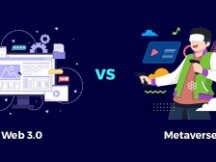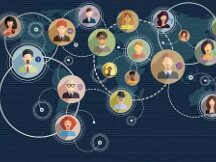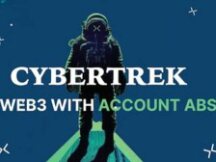Five elements of the Web3 infrastructure state
In 2014, Polkadot founder Gavin Wood coined the term “Web 3.0” (hereinafter abbreviated as Web3), and in a series of sentences, “The internet looks like a huge one. the tycoons are not bad, but at the same time they are not nice and unprincipled.
In seven years, this statement will become avant-garde, but in 2021 it will be very true. On the other hand, the growth of large Internet companies in the world is weak, and on the other hand, the blessing of blockchain technology, storage, registration, payment, communication, content platform, the content of the Web2 era can be achieved. Even today, these projects are still very hostile and the cost of implementation is very high.
Web2 has been replaced by Web3, Web3 is starting to improve and it's different every now and then.
In Web3, payment tools include Metamask, domain names include ENS and TNS, storage operations are done between Filecoin and Arweave, content is distributed on content platforms like Glass and different devices like Telegram and Discord . You can see that Web3 is starting to work fine.
Payment tools are represented by Metamask
In the area of fair payments, applications can be divided into broad and narrow terms, and narrow terms include popular payment tools such as Metamask, Polkadot {.js}, Ronin Wallet, and imToken. Infrastructure comprising multiple Bitcoin and Ethereum crypto wallets, "bridges" between Layer 2 platforms and Layer 1 public chains, and window replacement on centralized platforms.
The most recent of these is undoubtedly apps like Metamask. MetaMask is known as the world's best and most profitable open source Ethereum wallet that helps traders manage their Ethereum assets easily and conveniently. You don't need to download the MetaMask client, just add it to your browser to continue using it.

According to a report by parent company Metamask, ConsenSys, in October of this year the number of users of MetaMask wallets exceeded 10 million in August, reaching 10,354,279, 19 times more than a year earlier. As of August 2021, the eight countries that use MetaMask the most are the Philippines, United States, Vietnam, United Kingdom, China, India, Russia, and Brazil. In other words, almost all active cryptocurrency traders are almost all MetaMask users.
ConsenSys was developed by Ethereum co-founder Joseph Lubin and is known as one of the blockchain giant's “three pillars”. ConsenSys has planted over 50 well-known brands that support the growth of the Ethereum ecosystem. Activities include key integrations, services, design tools, real estate planning, B2C dapps, business solutions, cross-platform applications, and more, while forming partnerships with government agencies, financial companies and enterprises online to bring Ethereum onto the world stage. The other two positions will be Microsoft Visual Studio and a blockchain industry expert in the blockchain industry like McKinsey.
Amid the wave of DeFi and NFT, Metamask quickly overtook major browsers with its great features and became the most convenient tool for web payments.
Check the development history of MetaMask.
2019 is a year of significant strides in transforming the Ethereum ecosystem, with DeFi launching the Ethereum network with over 520 new Dapps, over 20 million new numbers, and over 400,000 new locations. At the same time, the popular content of NFTs and DAOs in 2021 also set the stage for 2019.
2020 is DeFi's flowering year. As the COMP token grew overnight, the “market is mining” quickly pulled out of the loop and the time for DeFi to start was over. Increase in the price of the DeFi contract in USD. $ 700 million in early 2020, reaching $ 15 billion in December. As of October 2020, the monthly lifespan of the Metamask website and terminal was over 1 million, an increase of over 400% from 264,000 in 2019.
To date, DeFi contracts are worth hundreds of millions of dollars, and MetaMask has over 10 million subscribers.
MetaMask is a direct beneficiary of the success of the Ethereum ecosystem and facilitates the transition from Web2 to Web3. By "clicking" on an existing web page
Distributed storage and recording system
In the age of Web2, a lot of data created by online fingerprint and heavy users was stored in the middle of big servers like Google, Ali, and Tencent, and the world of Web2 created the realm of wonderful information.
How to store data in the Web3 era? How do you bring this realm of data to life on a reliable, trustworthy and secure data storage network? If the real-world virtual objects of the meta-worlds continue to be stored on the central server, the metadata increases the risk of invalidation or interference, and if the situation were similar, the meta-world would lose its value. relevance and its value.
Therefore, decentralized storage projects such as Filecoin, Arweave and Storj based on IPFS became necessary. IPFS pioneered the introduction of a supported Filecoin layer to ensure data is stored in real time, and Arweave achieves "cloud-like data storage" by storing persistent information on-chain through the technology development. Storj is A. It is a decentralized blockchain-based distributed cloud storage system that allows users to encrypt content uploaded to the blockchain at any time.
Use IPFS based Filecoin as an example.
Let's take a look at IFPS first, this project is the mid-size solution planned for 2015. Filecoin is the backing layer of IPFS. With Filecoin, users use free hard drive space and bandwidth to store data and retrieve services in the open store, which reduces hard drive capacity and uses PoRep (proof of copy) and Proclamation (proof of time and space). : If the miner collects actual data, in this case the user can order to find the appropriate miner, encrypts the data, distributes it and sends it to the miner. to prove his position. to receive rewards. This is how the above works.
Let's say you buy $ 400,000 in CryptoPunks through OpenSea. Rest assured that it is stored on a central server?
Obviously, storage development is a necessary infrastructure before the advent of the Web3 era.
About the registration name.
As we all know, the registration of a domain name is a personal home page on the Internet, "real estate online" in the management of people and businesses. Names can be real or transparent, from personal blogs to public websites of different companies. A domain name can be small, it can be written by personal businesses, or it can be a website and newsletter that are visited millions of times every day.
However, in the age of Web2 everything works on a central network, and even if you are a member of a domain name, the domain name is still stored on the central server and can be easily controlled by humans.
The emergence of registered domains like ENS and TNS will change this phenomenon.
ENS stands for Ethereum Domain Name Service, the Chinese name is “Ethereum Domain Name Service”. An open, scalable, decentralized naming system based on the Ethereum blockchain, typically provides a human-readable card. ENS provides human readable names like tb.eth for machine readable characters and the ability to read Ethereum addresses, content hashes, and metadata. TNS, short for Terra Name Services, is a measurable, distributed, and open source Terra blockchain with operations similar to ENS.
So what's the difference between a registered domain and a decentralized domain?
Take ENS as an example, the entities between ENS and DNS are somewhat similar and work almost the same, except that DNS resolves domain names to IP addresses and ENS resolves .eth domain names to Ethereum addresses. Unlike DNS, ENS is more decentralized. ENS generally has two components: a list and a solution. The ENS domain name is a smart contract that contains the names of all domain names and subdomains, and the resolver is responsible for translating the domain name. Currently, ENS only supports digital address recognition, and it is difficult to connect to the internet of existing data with the lowest blockchain standard.
Additionally, ENS defines .eth domain names for Ethereum addresses.
Put simply, a decentralized domain name service system is based on the principle of decentralized blockchains such as Ethereum and Terra, and domain name ownership is completely and can greatly reduce the complexity of obtaining an address. arrival.
Decentralized social content and tools platform
“The Internet has ironed the world” is perhaps the most appropriate guide to explaining the impact the Internet has had on the world. The Internet has made the world a global city. But it also brings new problems - the culture of fast food has become more important due to the difficulty of safety rules when old content became cheaper and cheaper to copy and paste.
However, with the advent of blockchain, shortages and prices have rebounded. Copyright should be available in the form of "hash" and "secret key", and content is available in Filecoin, Arweave, and Storj.
Taking Content recently announced the Mirror platform as an example, the project entered the cryptocurrency field and gave developers control and buy-in by linking digital lej. These features allow Mirror to have a wide range of digitally native data carriers that many Internet applications have not had since its inception, including programmability, interoperability, composability, virality and transportability, ensuring an efficient exchange.
In terms of content interaction, Glass can be considered the first application of Web3.
For example, when it comes to content storage, Mirror uses Arweave, a distributed data storage protocol, to store and secure data, including author posted content and any edits, and all necessary documents. to verify the authenticity of the author. . Regarding the cost of data storage, the author's experience is that now users can send text and image files almost for free (which is unreliable as they have to pay less than US $ 0.001 in AR tokens). Once downloaded, they will be stored in Arweave forever.
In addition, Mirror recognizes the rights of developers by integrating ENS, the domain name registration services and blog domains of all writers are linked to their own ENS domain names, and the mirror.xyz subdomain which starts with the ENS domain is used as its own content publishing platform. Can create. home page.
Once the content has been published, the user signs it and identifies it with the key, so all the content placed in the Mirror contains a notice prohibiting the ownership of the product. . Content creation also makes the content visible, for example users create content.
I believe there will be a diverse Web3 content marketing platform similar to Mirror in the future.
About decentralized social tools.
Although Telegram has most instant messaging products, for example, Telegram uses end-to-end encryption, but not all content goes through the server and private chats can delete chat history when the user disconnects. the. These features have made Telegram one of the most popular communication devices in the calling industry.
However, in October 2019, the SEC asked Telegram not to sell the cryptocurrency (Gram).
Now it can be said that it has started to become a form of Web3, but I believe that all parts of the Web3 empire will be completed by the development of blockchain technology.
As Gavin Wood explains in "Why Web 3.0", as technology advances, employees will slow down new developments, view their products (such as Microsoft) as a cash cow, and retain more of the benefits of Web 3.0. . Just like cities and countries restrict Uber, Airbnb, Grindr, and Wikipedia, so you can't restrict Web3.0 either.

Scan QR code with WeChat









